
Makarov Monument is a monument in honor of the Russian naval commander, oceanographer, polar explorer, shipbuilder and Vice Admiral Stepan Osipovich Makarov (December 27, 1848 (January 8) 1849 - March 31 (April 13) 1904), located near The Naval Cathedral on the Anchor Square in the Kronstadt of St. Petersburg.
Makarov was the inventor of mine transport, the developer of the theory of unsinkability and the Russian semaphore alphabet, the head of the design and construction of the icebreaker "Ermak". He died during the Russian-Japanese War in 1904.
The monument to Admiral S.O. Makarov was erected in 1913. The author of the project was the sculptor Leonid Vladimirovich Sherwood. The sculpture of Makarov and the bas-reliefs of the monument were made of bronze in the bronze foundry of Karl Robecki in St. Petersburg.
The monument was opened and consecrated on July 24 (August 6), 1913 in the presence of Emperor Nicholas II.
The monument to Makarov is a composition. The monument itself is located on a large granite rock, mounted on a low base, lined with marble. Bas-reliefs showing the main episodes from Makarov's life are mounted in the rock.
The height of the Makarov sculpture is 3.55 meters, and the height of the pedestal is 5 meters.
Along the perimeter of the monument there is a fence in the form of cast-iron anchors with chains that were released from the warehouses of the Kronstadt military port.
The front side of the monument is facing towards the Anchor Square.
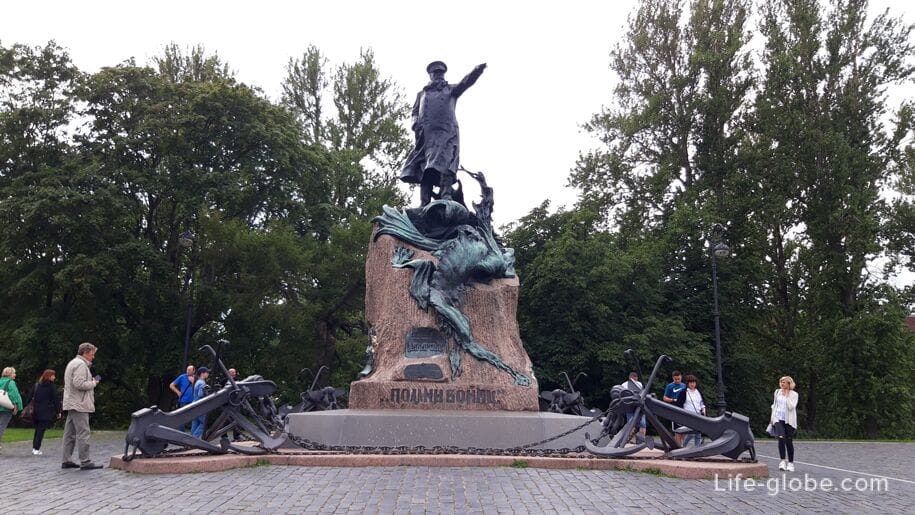
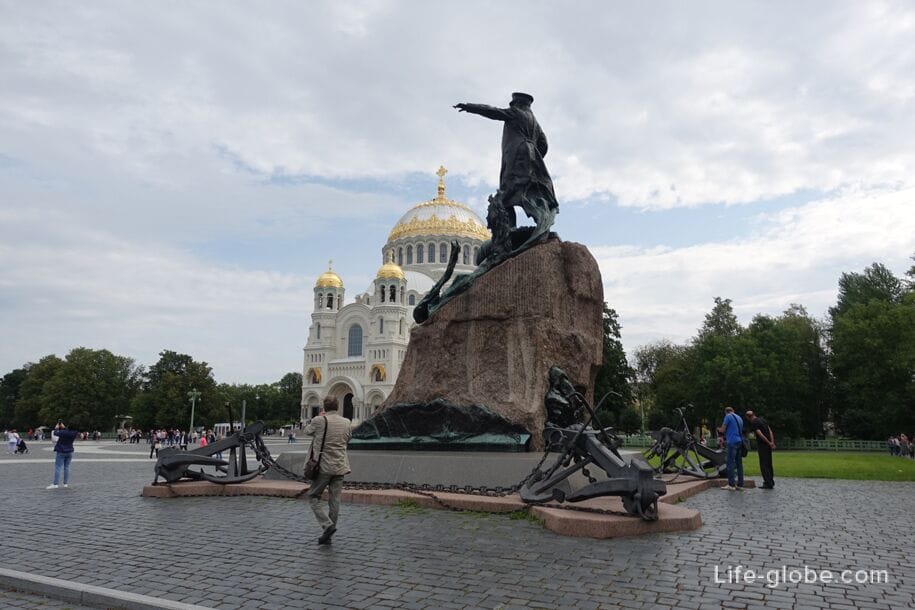
The granite rock on which the monument to Makarov is installed was originally intended for a monument to Emperor Paul I, but the barge on which the rock was transported from Vyborg to St. Petersburg sank in the Vyborg Bay.
The rock lay at the bottom for more than 100 years, until in 1911, by order of Emperor Nicholas II, it was raised, then consecrated, after which it was used for the pedestal of the monument.
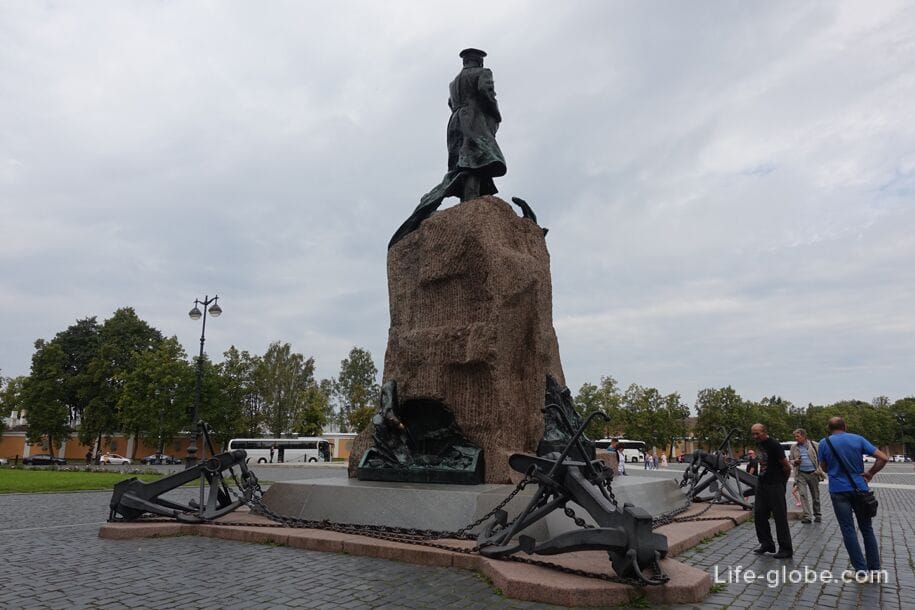
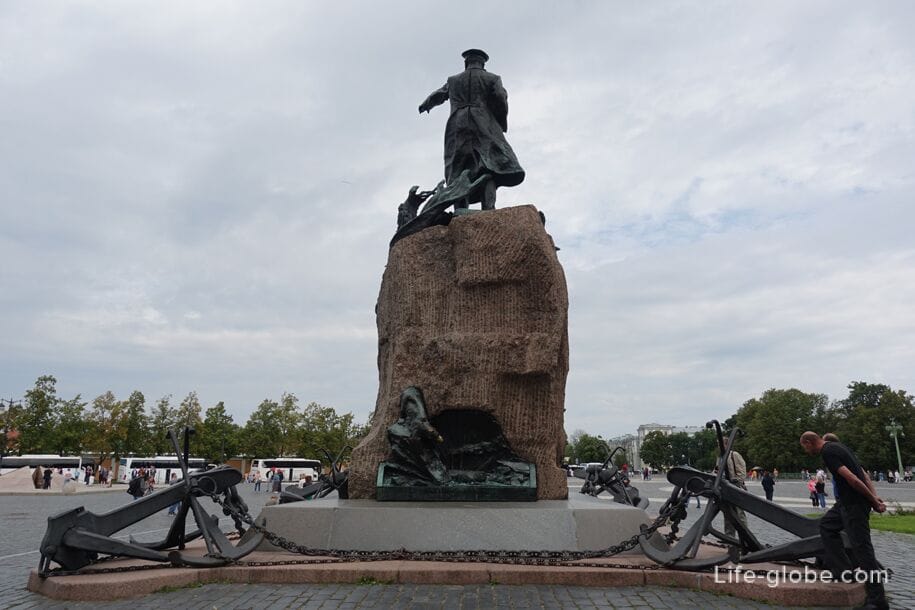
In the sculptural portrait of the monument, Makarov is depicted in full height, in a walking pose, with his left hand stretched out and his right hand hidden in the pocket of his overcoat. The floors of his greatcoat are blown by the wind. At Makarov's feet, a bronze sea wave rises, symbolizing and somewhat similar to a Japanese dragon, which drags the vice admiral into the depths of the sea.
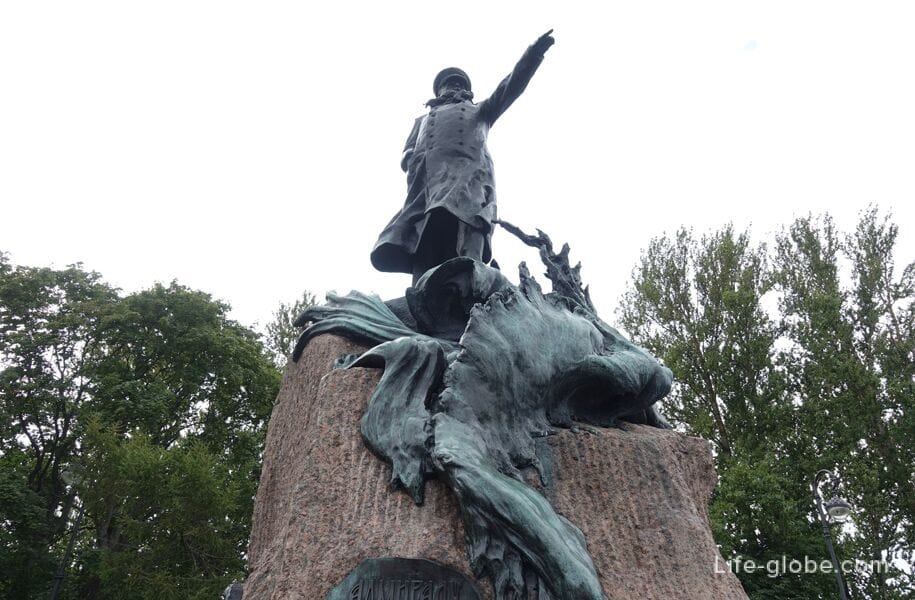
In the front part of the rock pedestal there is a bronze plaque with the inscription: "To Admiral Stepan Osipovich Makarov".
There is also an inscription "Remember the War" and a bronze plaque with lines about the history of the rock and the consecration of the monument: "In 1911, this stone was raised from the water in its present form on the raid Standard and handed over for this monument. The monument was consecrated on July 24, 1913 in the presence of His Imperial Majesty Emperor Nicholas II."
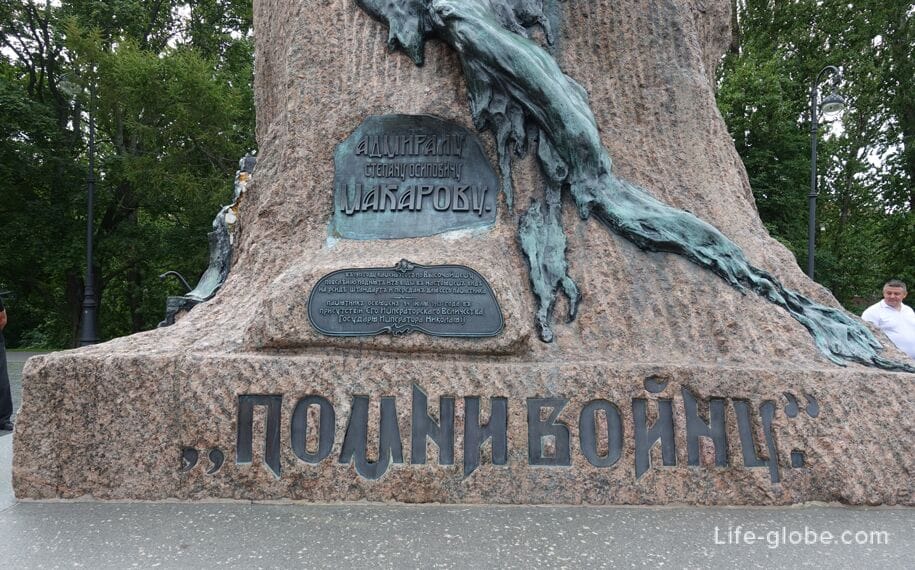
The side bas-relief, on the left side of the rock, called "The Death of Petropavlovsk", depicts an explosion on the mine of the battleship Petropavlovsk, during the Russian-Crimean War, in which Makarov died.
In the lower part of the bas-relief, the verses are embossed: "Sleep northern knight, Sleep honest fighter, Untimely taken by death. It was not the laurels of victory that You accepted the crown of thorns with a fearless squad. Your coffin is an armadillo, Your grave is the cold depths of the ocean, And your family is your century-old guard of loyal sailors. Those who shared the laurels, from now on with you, They share eternal peace. The jealous sea will not betray the hero who loved the sea to the earth. In a deep grave, in a mysterious darkness, Cherishing him and peace. And the wind will sing a dirge Over him, the hurricanes will cry with rain, And the night mists will spread a shroud thick Over the sea, And the clouds, frowning, will give him the last salute of Thunder with a rumble."

The bas-relief on the back of the rock, called "Ermak in the polar ice", depicts the Arctic voyage of the icebreaker "Ermak". This is the world's first Arctic-class icebreaker, designed and built under the leadership of Vice Admiral Makarov, and named after the Russian explorer of Siberia - Ermak Timofeevich.
The bas-relief above the icebreaker depicts a large polar bear.
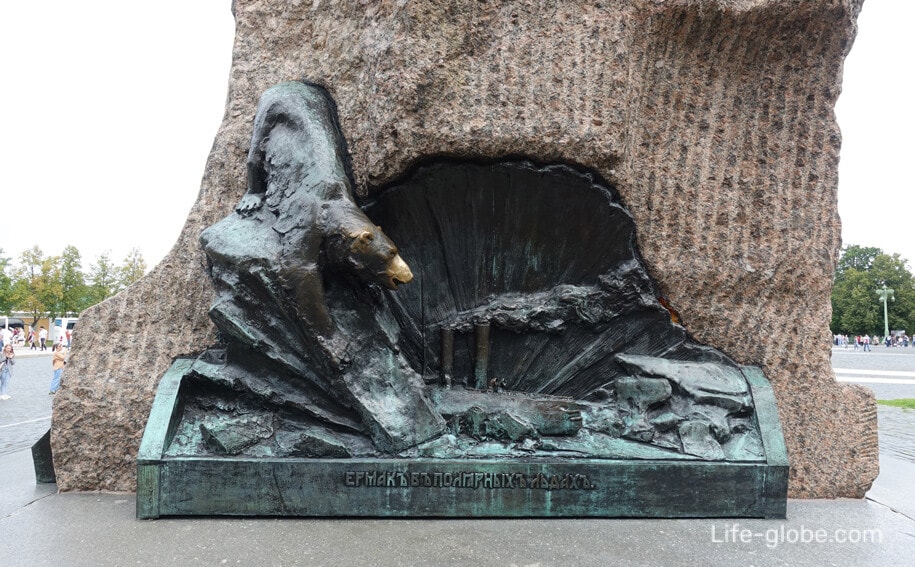
The third bas-relief, on the right on the rock, depicts the explosion of a Turkish ship during the Russian-Turkish War. On January 14, 1878, S.O. Makarov conducted the first successful attack in the history of mine weapons by torpedo boats on the outer Batumi raid. As a result, the enemy ship Intibach was sunk.
In the lower part of the bas-relief there is an inscription: "Explosion of the Turkish patrol vessel Intibach by the boats of the steamer Konstantin".

Coordinates of the monument to Makarov: 59°59'28.0"N 29°46'31.0"E (59.991111, 29.775278).
You can visit Kronstadt with one of the excursions from the center of St. Petersburg
All accommodation facilities in St. Petersburg, including in the city center, in Kronstadt and more remotely from those, can be viewed and booked here